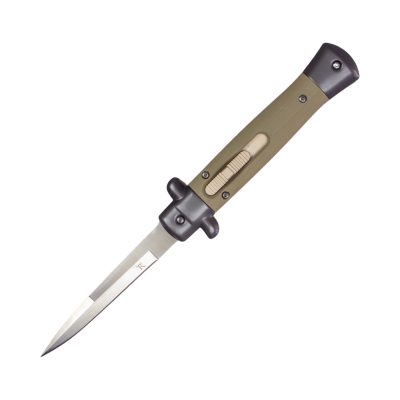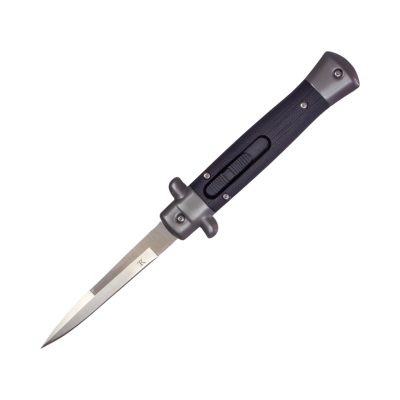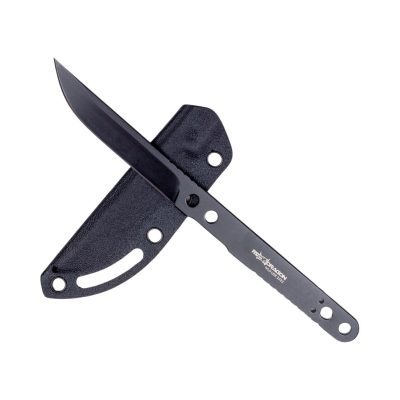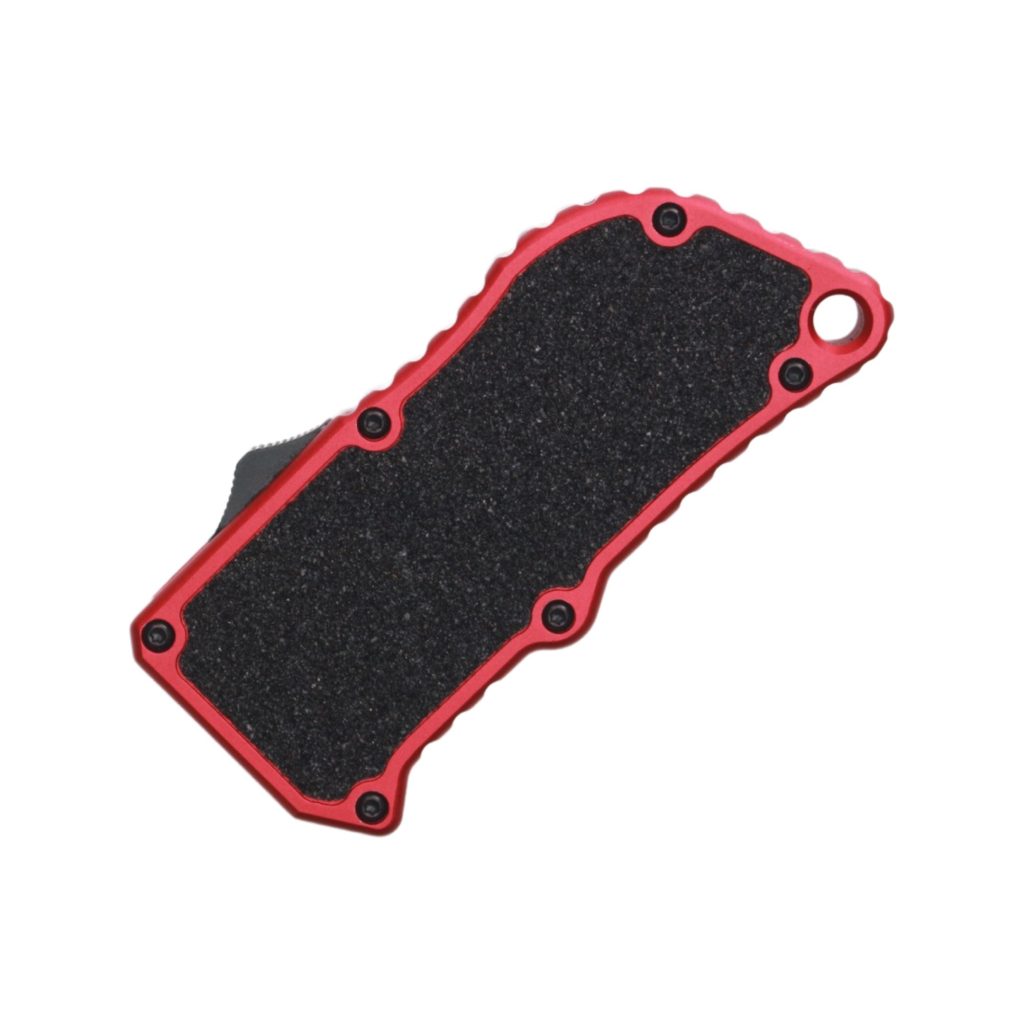It’s ironic that knife handles receive relatively little attention from people looking to make a new blade purchase. Knife style, blade design, types of metal employed, method of opening, country of origin, and intended end use all get more attention than the part users with which users will most often come into physical contact: the handle. Indeed, a handle can make the difference between a good experience with a knife and a negative one, a hand that’s left sore and aching or one’s ability to effectively whittle, perform survival tasks, cook, or even defend oneself.
Much time and effort has gone into developing and praising the synthetic materials used in knife handles. But while man-made options combine ease of use and enduring performance with budget-friendly price tags, they typically lack panache. If you’re looking for a handle material for a display piece or a special EDC or just something that makes eyes pop, you’re going to want a natural handle. In this guide, we will discuss the various types of natural materials available for knife handles, their qualities, and which you might want to select for specific kinds of knives.
Wood
Very likely the oldest kind of natural handle material, wood also boasts the greatest number of handle options. From types and conditions to finishes and added materials, wood handles offer a dizzying array of options. In fact, most of this article will focus on the various types of wood used in making knives. But before we jump directly into specific woods, let’s talk about the variables you should consider from the start.
While the specific tree from which a handle comes is important, so are other factors surrounding selection, such as the two broad categories into which handle materials fall. Wood types are either soft or hard, and the vast majority of knife makers prefer to use hardwoods when making handles. The reasons why are obvious. Hardwoods are, well, hard and will stand up to rough use for years. Other than some basic shaping, polishing, and fitting, they require little processing to work well.
Not so with softwoods. Left to themselves, these sorts of wood will dimple, dent, fracture, and split over time. No one wants a knife whose handle will only last for a single year or season. A dilemma arises, though, because some of the most beautiful wood patterns you can find come from softwoods. Additionally, many of these patterns come from burl, those knobby protrusions that you’ll find growing on trunks and branches. Burl wood may look ugly on the outside, but when cut, their tumorous appearance transforms into an ornate topography. What’s a knife aficionado to do? Inject a stabilizer (usually some sort of resin) into the softwood or burl. This hardens it and helps keep it from swelling or shrinking in extreme temperatures.
There’s one final wood condition that you might encounter. That’s spalted wood, and knife makers create these unique handles from an unlikely source: rot. Generally speaking, the term “tree rot” encompasses three distinct kinds of decomposition, all of which rely on specific fungi to break down a tree. With brown rot, fungi produce hydrogen peroxide, staining the wood a darker color. White rot relies on a different digestion mechanism, one that’s more aggressive and adds a yellowish hue. Finally, soft rot involves fungi employing nitrogen to create cellulase, which riddles the wood with tiny holes. Only brown rot and white rot create the map-like patterns seen in spalted wood, and all spalted knife handles contain a stabilizing agent to combat the softness concurrent with rot.
Before selecting a wood handle, ensure that you understand these variables and which apply to your chosen option. With that being said, some common kinds of handle wood include the following …
Oak
One of the most common woods used in knife handles, oak is readily available, relatively easy to work, and easy on the eyes. While not as hard as some other options, it remains reasonable durable and can stand up to repeated heavy use, which is why you’ll often find it on kitchen knives. However, oak does possess certain drawbacks. Its color palette is somewhat limited, tending toward a lighter blond appearance. It’s vulnerable to direct impact, which is why you won’t see hammers with oak handles. And it can cause a blade to begin to rust if it gets damp while untreated.
Rosewood
“Rosewood” is something of a catch-all term, encompassing several different kinds of wood, such as Indian rosewood and Honduras rosewood. Generally speaking, rosewood tends to be hard, darker in hue, and have a pleasing aroma about it. It will usually buff to a high sheen, although the amount and patterns of striation will vary from sample to sample. It’s considered one of the traditional kinds of hardwood knife handle.
Ebony
For roughly half a century, ebony didn’t make an appearance in the United States due to environmental sustainability efforts. Years of overharvesting had left this tropical tree greatly diminished in supply, largely because striated patterns in this nearly pitch-black wood had become so desirable — and there was no way to determined which logs would contain these patterns until after they’d been cut down. The result? Felled and rotting trees. Fortunately, as meticulous harvesting practices have become more commonplace, this hard, shiny wood has begun appearing once again in knife handles. Note, though, that ebony is prone to cracking.
Blackwood
Many knife makers consider blackwood (which is technically a type of rosewood) to be the superior alternative to ebony. It shares the weight, color, sheen, and hardness of ebony, but it’s less likely to split and (quite fortunately) not overharvested. Some blackwood can actually shade into red, lending it an even more exotic look. However, quite a few producers have caught on to blackwood’s appeal, and active conservation efforts mean that its supply remains steady as demand rises, leading to increased prices.
Mesquite
Sometimes dubbed “Texas ebony,” mesquite shares that tree’s distinctive hue, although it can shade beyond black into dark reds. Though it has a very dense texture, its grain can sometimes appear irregular. It holds up well against all kinds of damage, and (like blackwood) isn’t endangered, making it a suitable ebony alternative.
Desert Ironwood
Some craftsmen are so enthusiastic about ironwood that they become downright evangelical in singing its praises, calling it the ideal knife handle material. Beautifully patterned, strikingly hard, and highly resistant to shrinking or cracking, it makes for an incredibly desirable handle material. The downside is that ironwood is rare, which translates into higher expenses.
Cocobolo
In the same camp of “costs a lot and is highly sought after,” cocobolo has become a top choice for people making custom knives. Like ironwood, it’s hard, tough, and will function well over time in conditions both arid and humid. It even boasts a degree of resistance to insect damage. But the wood’s color is what sells most people on cocobolo. It runs to amber, but also features nearly a rainbow’s number of colors, everything from black, purple, and brown to white, yellow, red, and orange. A truly impressive wood for a knife handle.
Walnut
At one point in time, farmers located in certain sections of the American South would plant several acres of walnut tree every time one of their children was born. Why? The thought was that the stands of trees would mature just about the time the kids were ready to go to college — and that the harvesting of the walnut would pay their way through higher education. Walnut is certainly a beautiful dark wood, and it has long commanded a premium. However, some knife experts dislike the fact that it isn’t the sturdiest option.
Maple
Easy to work, easy to dye, easy to stabilize, and incredibly common for all of those reasons, maple often appears in knife handles. Patterns include folds, round shapes reminiscent of eyes, tight curls resembling flames, and striations that look like waves.
Cherry
Cherry strikes a middle ground between beauty and strength. It lacks the durability of some of the other hardwoods listed in this article, but it can still stand up to everyday use. (You probably wouldn’t want a cherry handle on a blade designed for survival situations.) It makes up for its slightly inferior toughness with a beautiful, fine-grained pattern that shifts from a rich red to a tawny blonde.
Birch
This bone- to honey-colored wood is prevalent in all sorts of decorative contexts for several reasons. First, it’s incredibly abundant worldwide, meaning that its supply is never at risk. Second, it requires little processing to function well and doesn’t require a great deal of effort to shape and polish. Third, it’s reasonably hard. And fourth, it’s inexpensive. All of this makes birch an excellent handle material for practical knives that can afford to get banged up. Unfortunately, birch can discolor and stain, and some find its finished pattern not particularly attractive.
Hickory
Hickory appears in countless tool handles, such as hammers, axes, shovels, and the like. Some might consider it too commonplace for a decorative knife handle, but when stained, it takes on a brown or dark-honey color with black stripes. While not the most luxurious handle material, it’s plentiful and practical.
Bocote
The advantages and disadvantages of bocote make it a somewhat challenging wood. On the one hand, it’s easy to work with, reasonable hard, and strikingly beautiful with its blond-and-black, high-contrast coloration. On the other hand, it’s porous and very expensive. Purchasers will need to exercise extra care when deciding if they want this wood.
Amboyna
Thought to have originally come from Indonesia, amboyna is highly sought after, particularly its burls. Most burls require stabilization, but amboyna often doesn’t, and the end result is a warm, variegated surface reminiscent of marble. An incredibly expensive wood.
Bloodwood
The best specimens of bloodwood possess a deep, vibrant scarlet hue reminiscent of its namesake. However, finding such samples isn’t easy, and many bloodwoods have more brown about them than red. Its surface only features subtle patterns, and although it’s quite hard, it does need frequent maintenance to retain its appearance.
Animal-Based Products
While wood is the most common material used in knife handles, various animal-based products also yield beautiful and striking results. Bone knife handles are a common choice, and one with thousands of years of history behind it. Bone handles existed when knife blades were volcanic glass rather than metal, and while they served a practical purpose then, today they’re almost purely decorative. The same goes for horn, which shares many of the same qualities of bone. Both are more difficult to fashion than wood, yet are also more porous and prone to shattering if struck. This makes bone and horn handle options less than ideal for any knives except those intended for display.
Another animal-based knife product is leather, and it shares similar drawbacks to leather and bone. Although it won’t crack or split when impacted, it is prone to discoloration or wear when regularly used. Leather knife handles are typically constructed of a single piece of treated hide or wound with cord-like strands.
Your final common option that comes from animals is mother of pearl, the inner-shell material created by mollusks that’s also called nacre. Shiny, smooth, and seeming to glow with its own inner light, mother of pearl makes an impressive, ivory-colored handle. Like the other options in this section, though, understand that it can split and crack if not used carefully.
Other Options
Metal handles commonly appear in knife handles, but most of the options include man-made alloys (e.g., titanium, stainless steel). However, you can find handles constructed of native metal such as aluminum. Gold and silver also appear as decorative options on various high-end display knives.
Wrapping a knife handle with cord is also a possibility. Today, most corded handles are made out of paracord, which isn’t exactly natural since it’s fabricated from nylon. However, various kinds of cord like cotton, manila, and sisal are still options.
Browse our selection of OTF knives and see our various handle options!







